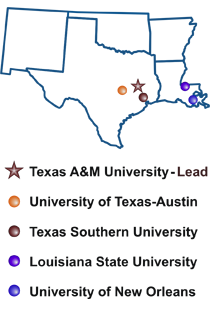The Overlay Tester: A Sensitivity Study to Improve Repeatability and Minimize Variability in the Test Results
Lubinda F. Walubita, Abu N. Faruk, Gautam Das, Hossain A. Tanvir, Jun Zhang, and Tom Scullion, Texas A&M University, February 2012, 154 pp.
Hot mix asphalt (HMA) overlay is one of the most commonly used methods for rehabilitating deteriorated pavements. One major type of distress influencing the life of an overlay is reflective cracking. Many departments of transportation have implemented design-level tests to measure the rutting potential of HMA; these are typically wheel-tracking tests. However, currently, there is no national design-level test for measuring resistance to cracking. Currently, the Texas Department of Transportation uses the Overlay Tester (OT) to evaluate the cracking susceptibility of HMA mixes in the laboratory. While, the OT effectively simulates the reflective cracking mechanism of opening and closing of joints and/or cracks, repeatability and variability in the test results have been major areas of concern. In particular, variability in the OT test results poses a problem with most of the conventional dense-graded HMA mixes, such as Type C and D, which is approximately 75 percent of all the HMA used on Texas highways.
This laboratory study presents a comprehensive sensitivity evaluation of the critical steps of the OT test procedure in an attempt to optimize the OT repeatability and minimize variability in the test results. In general, the study indicated that the sample drying method, glue quantity, number of sample replicates, air voids, sample age at the time of testing, and temperature variations are some of the key aspects that have a significant impact on the OT test repeatability and variability. Overall, findings from this study indicate that variability in the OT test results can be minimized if these aspects are improved and/or more clearly specified in the OT test procedure (Tex-248-F).
Keywords: HMA, Cracking, Overlay Tester (OT), Peak Load, OT Cycles, Repeatability, Variability, Coefficient of Variation, Monotonic, Tensile Strength, Tensile Strain, Tensile Modulus, Fracture Energy (FE), FE Index, Pseudo Strain Energy, Air Voids, X-Ray CT
ENTIRE REPORT (Adobe Acrobat File – 4.1 MB)


